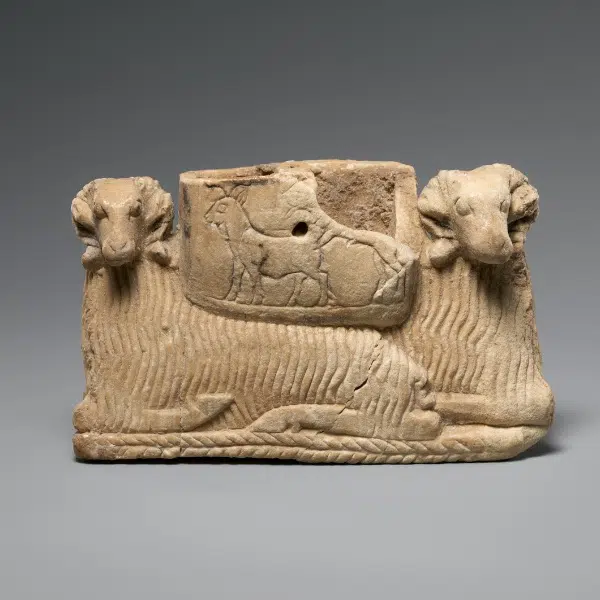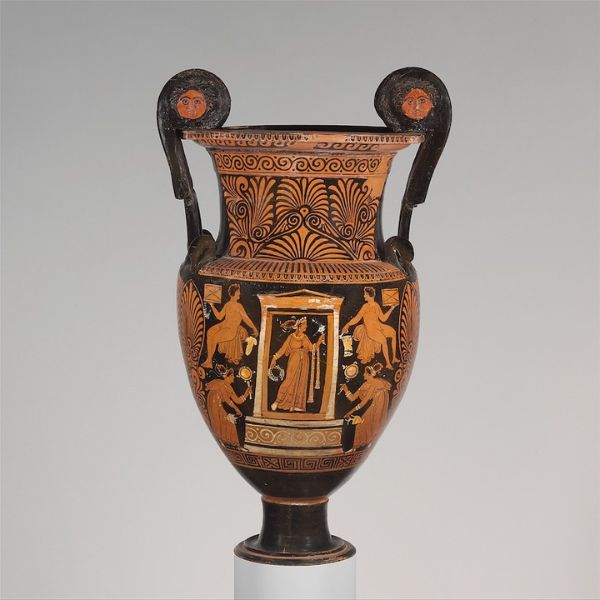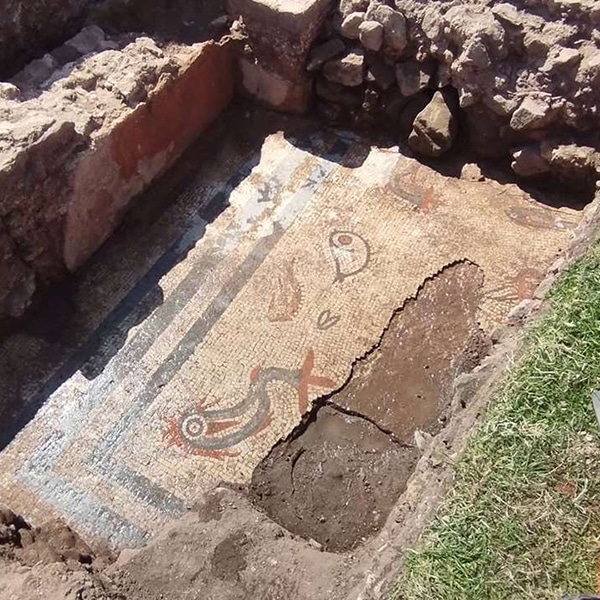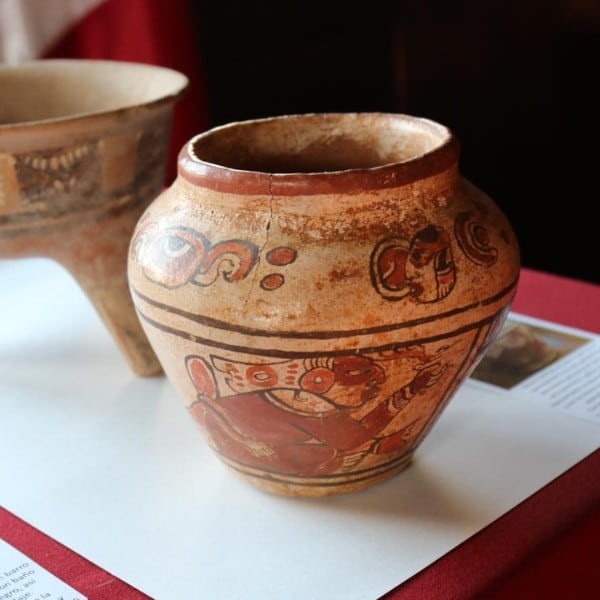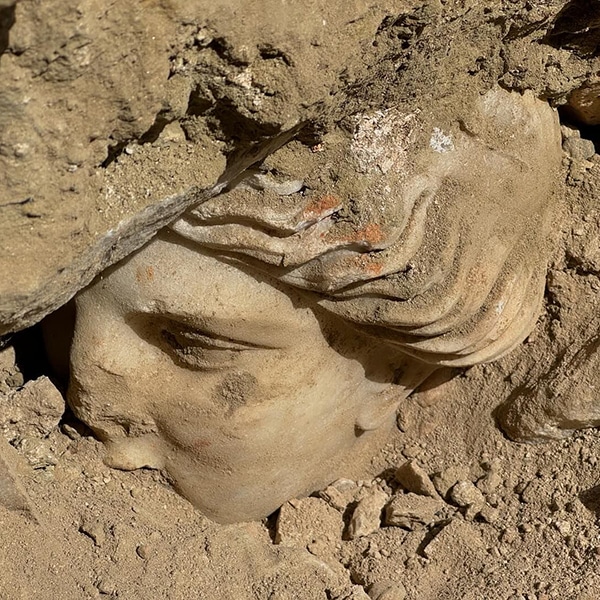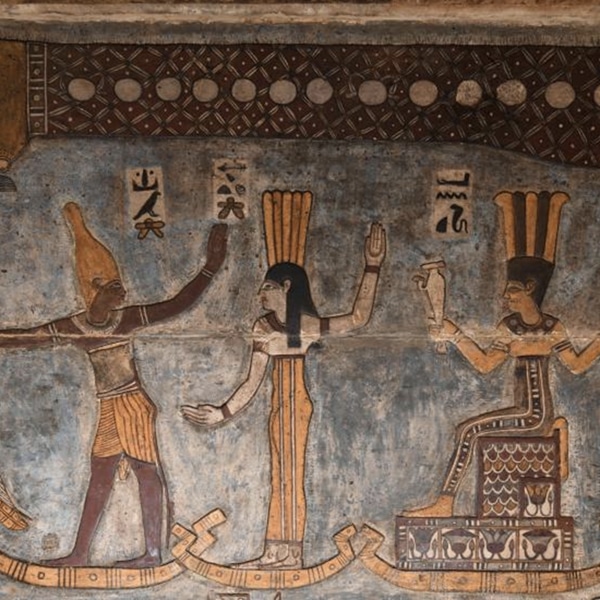
Luxor Obelisk in the Place de la Concorde, Paris, France. (Photo: Stock Photos from Vladimir Volodin/Shutterstock)
Before there was the skyscraper, ancient builders created the original tall, imposing structure: the obelisk. With origins in ancient Egypt, these four-sided structures were typically erected in commemoration of the rulers and spread in popularity across the ancient world— including ancient Rome and Assyria.
Even after the end of these civilizations, the obelisk continued to be a popular monument for its striking yet simple design. In fact, some of the most iconic landmarks in the world are a version of the ancient invention, such as the Washington Monument in Washington, D.C.
Here, we will learn the origins of obelisks and what some famous obelisks are around the world.
What is an obelisk?

Obelisk of Tuthmosis III, Istanbul, Turkey. (Photo: Stock Photos from ibrahim kavus/Shutterstock)
An obelisk is a celebratory monument originating from ancient Egypt. It is a tall, four-sided structure with a pyramid-shaped top. Originally called tekhenu in ancient Egyptian, the name obelisk comes from the Greek writer Herodotus, who used the ancient Greek word obeliskos (meaning “split, ail, pointed pillar”) to describe them.
History

Hieroglyphic carving of the Ancient Egyptian god Ra. (Photo: Stock Photos from Vixit/Shutterstock)
Ancient obelisks were monolithic structures—meaning they were made from one piece of stone—that were created in pairs for the entrance of temples. The shape of the obelisk is associated with the ancient Egyptian god of the sun, Ra. Most ancient obelisks feature hieroglyphic carvings on all four sides that are dedicated to Ra and the ruler who erected the monument.
After Cleopatra‘s death in 30 BCE and Rome assumed control over Egypt, the majority of Egyptian obelisks were removed from their original locations and scattered across the Roman Empire. It is for this reason that Rome is home to the most ancient obelisks in the world.
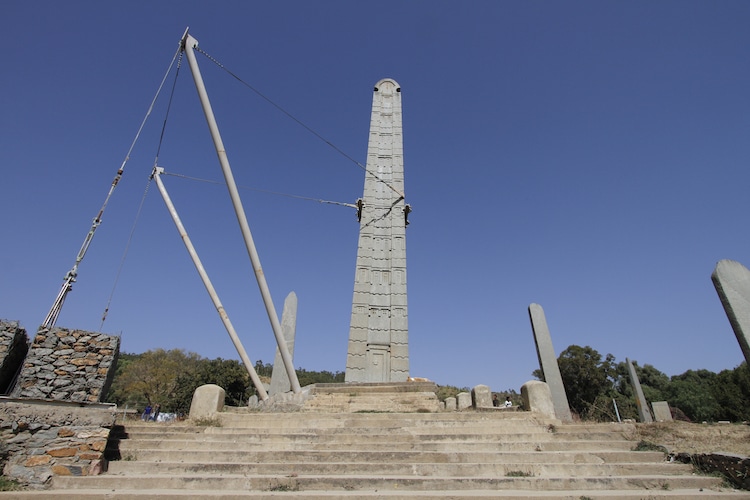
King Ezana's Stele, Axum, Northern Ethiopia. (Photo: Stock Photos from knovakov/Shutterstock)
Although the oldest examples of obelisks originate from the ancient Egyptian empire, similar monuments have appeared in other civilizations, such as Assyria and the Axumite Kingdom (modern-day Ethiopia). King Exana's Stele from the Axumite Kingdom, for example, has a rounded top instead of a pyramid and features false doors and windows on its sides.
Famous Obelisks
“Unfinished Obelisk,” Aswan, Egypt
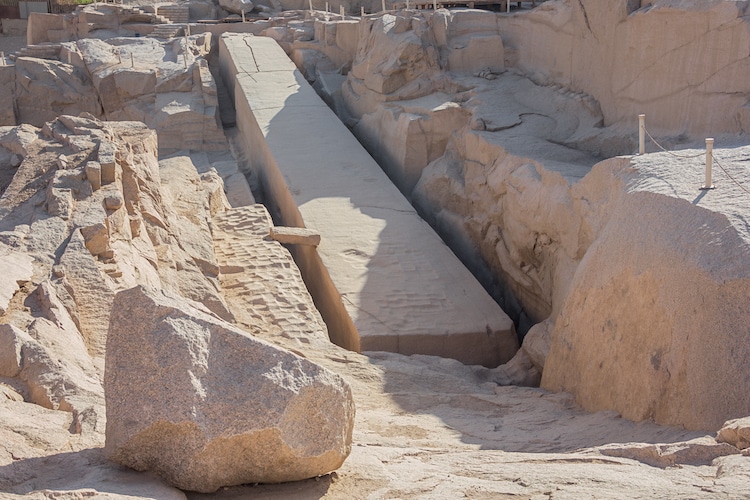
“Unfinished Obelisk” in Aswan, Egypt (Photo: Vermeulen-Perdaen-Guido/Depositphotos)
The largest known ancient obelisk in the world was never erected, perhaps due to its immense size, and can still be seen half-immersed in the ground in Aswan, Egypt. Known only as the “unfinished obelisk,” this structure was ordered by Hatshepsut, one of the few confirmed female pharaohs to rule Ancient Egypt. The incomplete monument measures 137 feet and weighs 1,200 short tons.
Obelisk at Saint Peter's Square, Vatican City, Rome, Italy
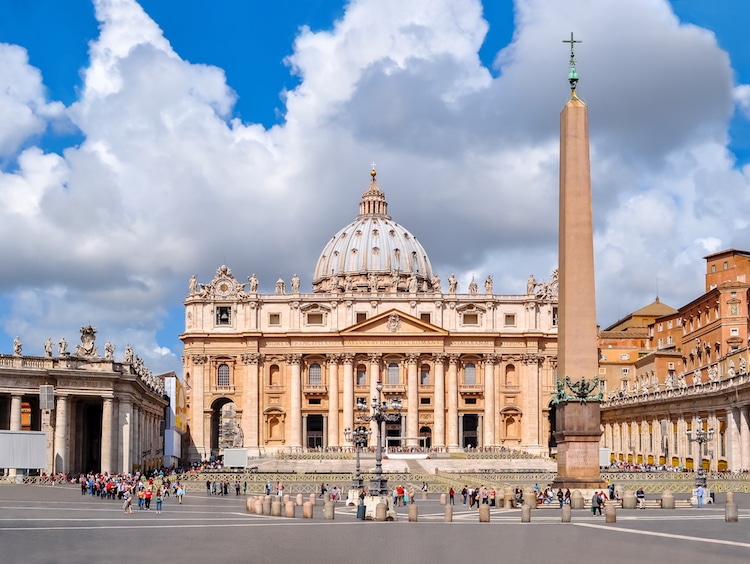
Obelisk in Saint Peter's Square in Vatican, Rome, Italy. (Photo: Stock Photos from Mistervlad/Shutterstock)
The obelisk at Saint Peter's Square in the Vatican is a monolithic stone monument that is estimated to be about 4,000 years old. It was brought to Rome from Egypt during the reign of Emperor Augustus and relocated to its current location in 1586 by Pope Sixtus V. Unlike most ancient Egyptian obelisks, it features no hieroglyphics on any of its sides.
Lateran Obelisk, Piazza San Giovanni, Rome, Italy

Lateran Obelisk, Piazza San Giovanni, Laterano, Rome. (Photo: Stock Photos from Kiev.Victor/Shutterstock)
Originally from the Temple of Amun in Karnak, Egypt, the Lateran Obelisk is the tallest obelisk in Rome and the largest standing ancient Egyptian obelisk in the world—weighing 455 tons and standing at about 149 feet tall. It was transported to Rome in 357 CE as part of the decoration for the Circus Maximus.
Heliopolis Obelisk, Cairo, Egypt
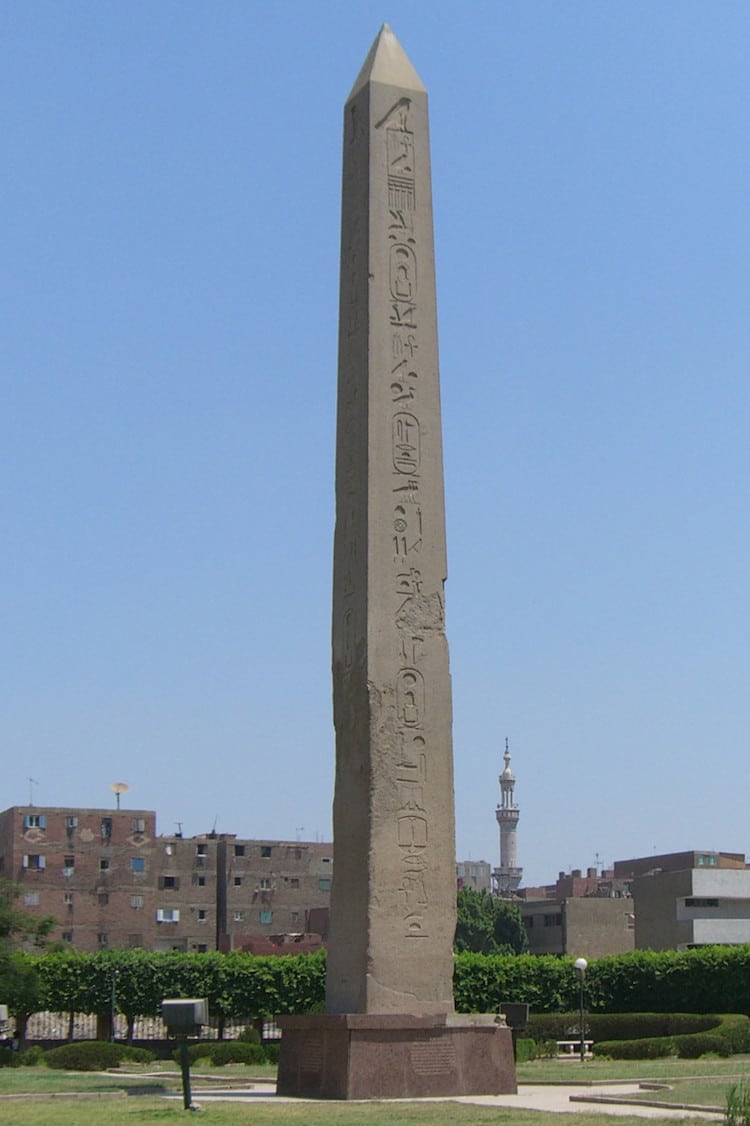
Heliopolis Obelisk, Cairo, Egypt. (Photo: Wikimedia Commons, Public domain)
The Heliopolis Obelisk is the one remaining monument from a pair of red granite obelisks erected by Pharaoh Senusret I, who reigned during the Middle Kingdom period of Ancient Egypt. It is 67 feet tall and the oldest standing obelisk located in Egypt.
Luxor Obelisks (Luxor, Egypt & Paris, France)
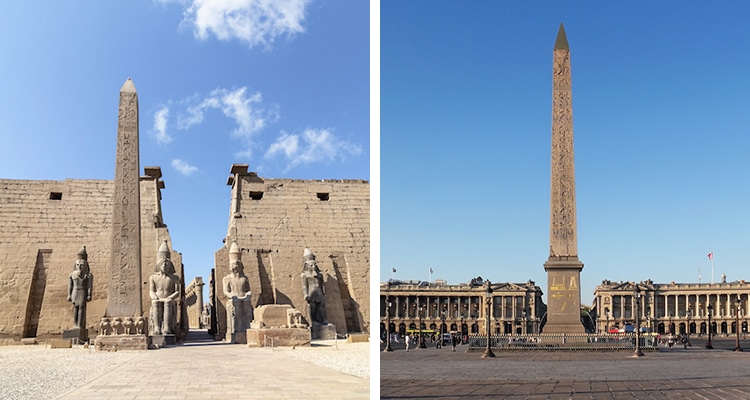
Left: Luxor Obelisk at the Luxor Temple, Egypt. (Photo: Stock Photos from agsaz Shutterstock) | Right: Luxor Obelisk at the Place de la Concorde, Paris, France. (Photo: Stock Photos from ArTono/Shutterstock)
The Luxor Obelisks are a pair of 75-foot-high granite monuments originally created for the Luxor Temple in Egypt. They were fashioned approximately 3,000 years ago during the reign of Ramesses II. In the 19th century, the right-hand obelisk was shipped to Paris as a gift from Muhammad Ali Pasha, ruler of Ottoman Egypt to France. In exchange, Egypt received a clock that can still be seen at the Cairo Citadel.
Today, the right-hand obelisk is situated in the center of the Place de la Concorde in Paris, and the left-hand still stands in front of the Luxor Temple.
Washington Monument, Washington DC, United States

Washington Monument, Washington DC. (Photo: Stock Photos from Orhan Cam/Shutterstock)
Within the National Mall is the world's tallest obelisk and the world's tallest stone structure, the Washington Monument. It is a hollow Egyptian-style obelisk that stands about 555 feet tall and is made from a combination of marble, granite, and bluestone. The monument was designed to commemorate George Washington, the first president of the United States; it began construction in 1848 and was completed in 1884.
Obelisco de Buenos Aires, Buenos Aires, Argentina

The Obelisk of Buenos Aires, Buenos Aires, Argentina. (Photo: Stock Photos from sharptoyou/Shutterstock)
Like the Washington Monument, the Obelisco de Buenos Aires is an icon of its country. The 221-foot monument was made in only 31 days between the months of March and May in 1936. Located in the Plaza de la República in a busy intersection, the white stone obelisk is visible from most parts of the city. It commemorates the first foundation of Buenos Aires.
Frequently Asked Questions
What is the purpose of an obelisk?
In ancient times, obelisks were traditionally built as celebratory monuments or landmarks.
What is the obelisk a symbol of?
The shape of an obelisk symbolizes the Egyptian sun god Ra.
Is the Washington Monument an obelisk?
The Washington Monument is the world's tallest obelisk at 555 feet and the world's tallest stone structure.
This article has been edited and updated.
Related Articles:
What is the Great Sphinx? Discover the History Behind the Ancient Egyptian Monument












































































